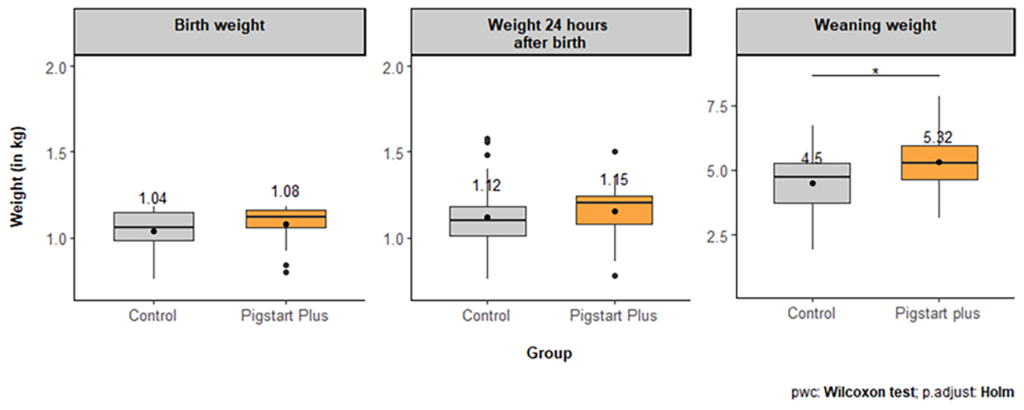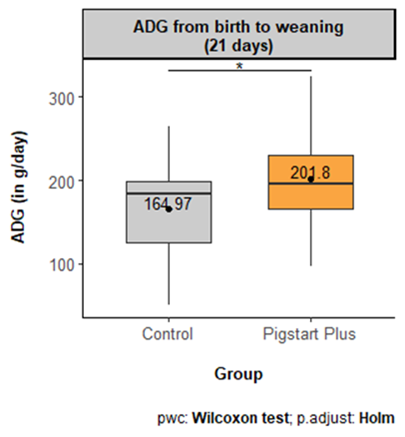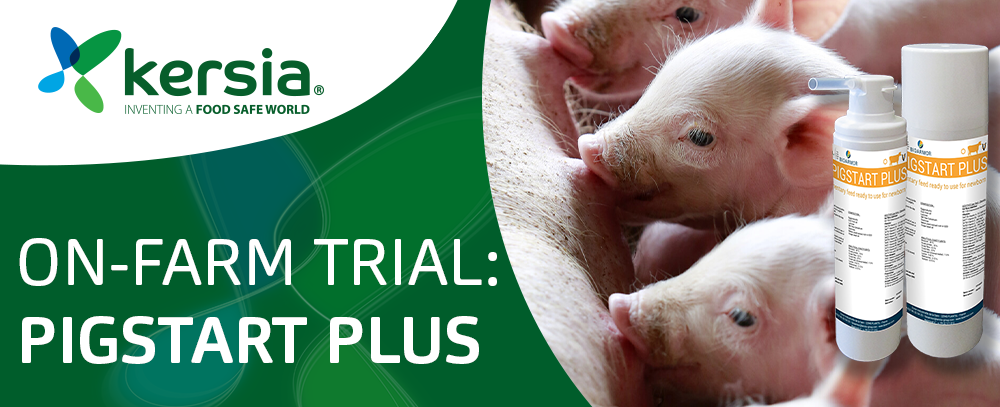Discover the effectiveness of Pigstart Plus in supporting weak piglets during the pre-weaning phase. Learn about our trials, methodology, and results for enhanced piglet growth and vitality.
Introduction:
Optimizing the pre-weaning phase is crucial for ensuring the health and growth of piglets into robust adults. With the phasing out of Zinc Oxide from piglet feed due to regulatory concerns (e.g., EU ban in 2022), the swine industry is actively seeking nutritional alternatives to sustain piglets during this critical period.
In modern pig production, larger litter sizes increase the likelihood of stunted or weak piglets at birth. In such scenarios, the availability of maternal colostrum is vital for reducing mortality rates. However, approximately 30% of sows are unable to provide sufficient colostrum. It is in response to this challenge that Pigstart Plus was developed. Formulated with easily assimilable colostrum, energy, and essential vitamins, Pigstart Plus serves as a valuable aid post-birth. Packaged conveniently in a measuring bottle for ease of administration, this product is specifically targeted towards fragile piglets, with demonstrated effectiveness in improving their condition.
Materials & Methods:
Our trials were conducted at a commercial farm in Brittany, France, encompassing two consecutive batches of sows totaling 41 individuals. Within each batch, sows were carefully grouped to ensure homogeneous litter rankings across both treated and untreated groups (10 sows per group).
The focus of our analysis was on the weakest and most vulnerable piglets, characterized by a birth weight of less than 1.2 kg. A total of 54 piglets were selected, with 19 receiving Pigstart Plus (experimental group) and 35 left untreated (control group).
Piglets in the experimental group were administered two doses of Pigstart Plus: the first immediately after birth and the second three hours post-farrowing. We meticulously recorded the weights of all piglets at birth (pre-treatment), 24 hours post-farrowing, and upon weaning (day 21).
Results

Figure 1: Comparison of the average weight of piglets during the trial. Symbols above the means mean that they are different according to the Wilcoxon test. * = p-value < 0.05

Figure 2: Comparison of the average ADG of the groups during the trial. Symbols above the means mean that they are different according to the Wilcoxon test. * = p-value < 0.05
Conclusion:
Our findings reveal a notable difference in the growth trajectory between piglets administered Pigstart Plus and those left untreated. While initial birth weights were comparable across both groups, piglets receiving Pigstart Plus demonstrated significantly higher weaning weights. This observation is substantiated by the notably higher Average Daily Gain (ADG) exhibited by piglets in the experimental group compared to their counterparts in the control group.
By leveraging the nutritional benefits of Pigstart Plus during the critical pre-weaning phase, piglets experienced enhanced growth outcomes, underscoring its efficacy in supporting piglet vitality and development. These results underscore the potential of Pigstart Plus as a valuable tool in optimizing pre-weaning piglet nutrition and fostering healthier swine populations.

